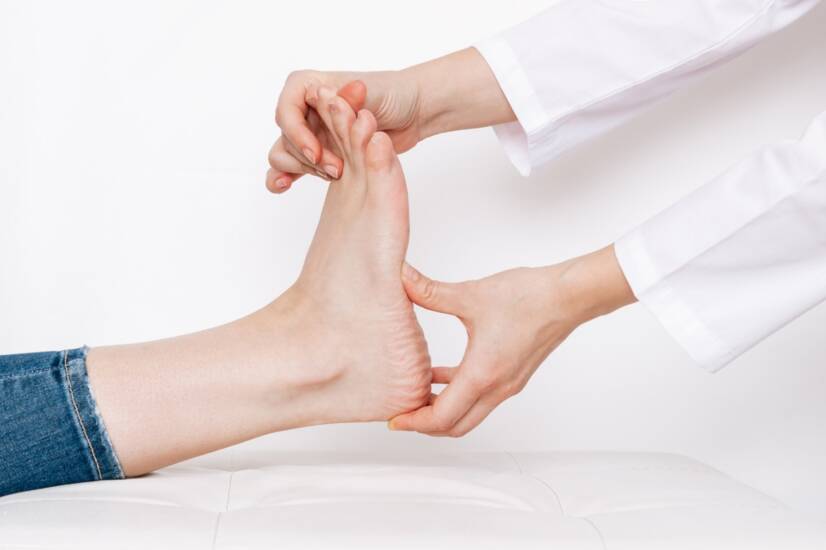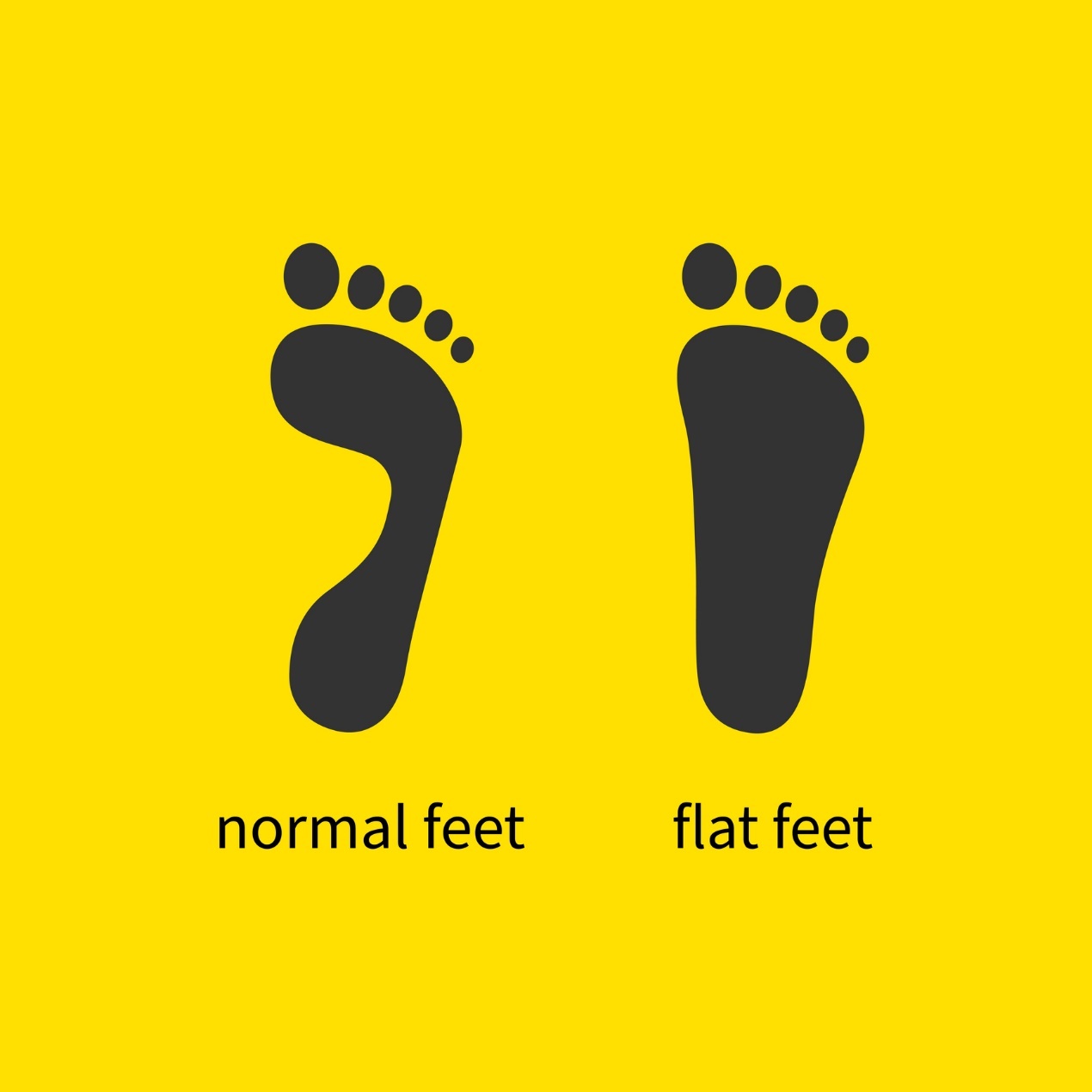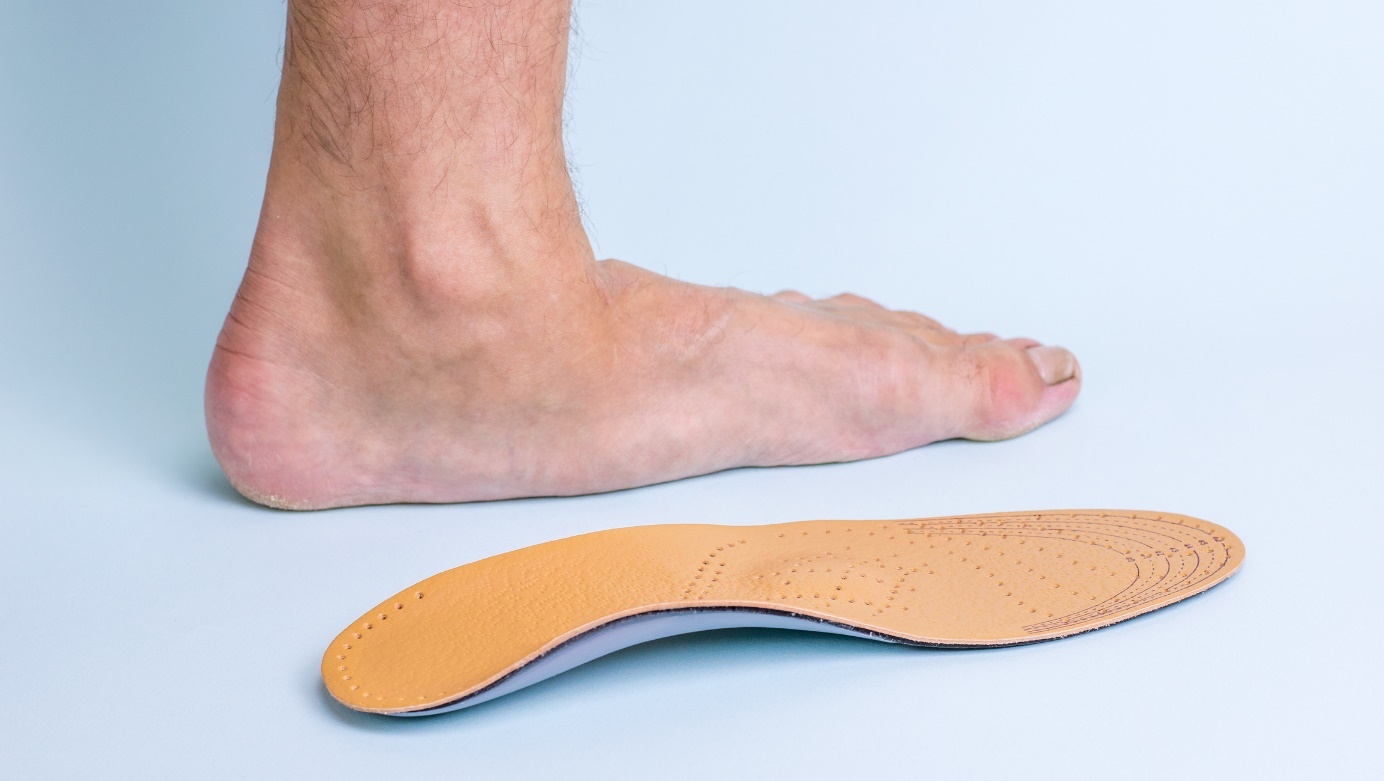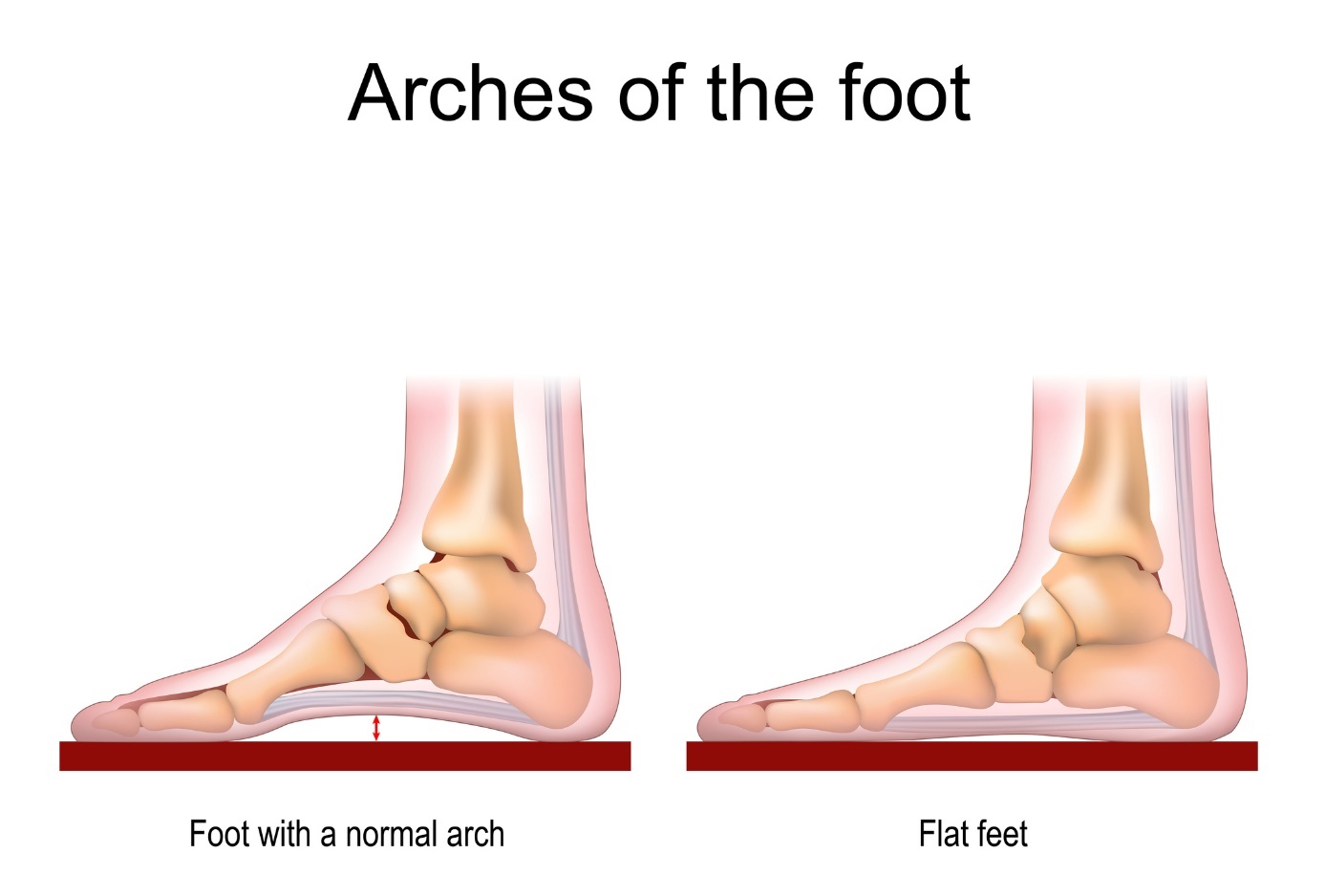- Jan Hugo and others - The Great Medical Dictionary
- mayoclinic.org - Flat Feet
- verywellhealth.com - Overview of flat feet
- healthline.com - What you should know about flat feet
- nhs.uk - Flat Feet
- my.clevelandclinic.org - Flat Feet
Flat feet: what are the causes and symptoms? How can they be helped?

Flatfoot (pes planus) occurs mainly in obese patients. It is the absence of an arch. The foot touches the ground completely.
Characteristics
Pes planus is the technical name for a flat foot. Due to various factors, the arch of the foot disappears and the foot touches the ground completely.
Flat feet are most commonly caused by overweight, obesity and standing for long periods of time. Sometimes improperly chosen footwear contributes to flat feet.
Flat feet usually cause pain. They contribute to other conditions such as chronic venous insufficiency (insufficiency) of the lower limbs.
The arch of the foot is both longitudinal and transverse. In this disease, the entire arch gradually lowers or disappears as pressure on it increases.
The position of the foot depends on the position of the bones, joints and ligaments.
20-30% of people suffer from some form of flatfoot.
Flatfoot can be:
- Congenital
- Acquired
Pes transversoplanus (transversely flat foot) is different from true pes planus. The arch is bowed and is formed by the heads of the metatarsal bones. The causes of transversely flat foot are the same as those of flat foot. Often blisters and corns form.
There are other types of altered foot pathologies. These include horse foot, bowed foot or hook foot.
Flatfoot disease can occur even in early childhood. It does not become fully apparent until after the age of 30.
The patient may experience cramps and stiffness in the leg after prolonged walking.

Flat feet in children
In newborns and children under 3 years of age, the arch is not sufficiently developed. The child does not stand up on its feet until 1 year of age.
Some children have structural deformities. These affect the normal alignment of the bones of the foot.
Flat feet in childhood are associated with genetic diseases. These are the following diseases:
- calcaneovalgus
- congenital vertical heel bone
- dyspraxia
- Ehlers-Danlos syndrome
- hypermobility
- loss of ligaments
- metatarsus adductus
- congenital fusion of the leg bones
Flat feet are often associated with childhood obesity. The difficulties become most apparent in adulthood.
Flat feet in adults
The term 'clubfoot' refers to damage to the arch of the midfoot. It occurs most often in women after the age of 40 and in obese people.
Hypertension or diabetes can interfere with the condition by altering the blood supply to the foot. Previous injury can also lead to a dropped foot arch.
Some diseases and conditions in adults are associated with flatfoot:
- Pregnancy - Increased elastin production and hormonal changes (ligament relaxation)
- Marfan syndrome - Genetic connective tissue disorder
- Rheumatoid arthritis - Autoimmune disease affecting the joints
- Scoliosis - Leads to unilateral (one-sided) flatfoot
- Cerebral palsy
- Muscular dystrophy
- Arterial hypertension
- Diabetes mellitus
The age of the patient may aggravate flatfoot of one or both leg arches. A condition called rigid pes planus (flatfoot) may occur. There is a limitation of leg mobility.
Types of flatfoot:
- Flexor - It is the most common form. The foot is all flat and does not hurt. It occurs from childhood.
- Achilles tendon narrowing - The tendon attaches to the heel bone. Pain is felt when the tendon narrows during walking and running.
- Posterior tibial tendon dysfunction - Associated with injury, tearing and swelling. Causes ankle soreness.
Causes
The main cause is:
- Long-term overweight to obesity. More pressure is put on the arch of the foot when standing.
- A warning sign is prolonged standing, e.g. at work
- Improperly chosen footwear
- Ankle injury, dislocation, etc.
- Rheumatoid arthritis
- Ageing
- Diabetes mellitus(diabetes)

Manifestations
Most people with flatfoot show no symptoms.
The flatfoot patient walks on the whole foot. The arch of the foot is sagging. There are changes in gait. Pain may not be present. However, it becomes more pronounced after prolonged walking. The patient therefore refuses to walk for longer.
There is pain on the inner side of the foot up to the tibia. There is valgusity of the heel (buckling).
Occasionally, foot cramps may occur. Sometimes muscle pain is added.
The gait may be compensatory shuffling or relieving because of the above pain.
Mostly the disease occurs on both feet. Sometimes it arises compensatorily as a reaction to stress in other diseases. It happens, for example, in diseases of the large joints of the lower limbs.
Arthritis (inflammation of the joint) in the ankle area can lead to flat feet. These are compensatory mechanisms - asymmetrical posture and so on.
Without pain, treatment is not necessary.
The disease causes difficulties especially when standing for long periods, walking or running.
Interesting facts
Flatfoot is diagnosed by routine examination. The position of the foot while standing, walking, on the toes and on the heels is assessed. Podoscope and plantography are used for diagnosis.
The podoscope will show the points of greatest pressure exerted on the device.
Plantography examines the footprint, focusing on the arch of the foot.
X-ray (X-ray), CT (computed tomography) and MRI (magnetic resonance imaging) are sometimes used to diagnose pes planus.
A flat foot is common in children before the foot vault is fully developed. Some people do not develop a foot vault. They may or may not have problems.
A flat foot is usually associated with an exaggerated (large) pronation. In this case, the whole foot is buckled. This condition is unbalanced. It leads to further damage to the joints of the lower limb - ankle, knee and hip. The tibia is also unnaturally built.
The overall consequences of flat feet can be associated knee pain and Achilles tendonitis.
In children, there may be partial correction of the condition. In contrast, in adult sufferers, the condition is often irreversible (irreversible).
The disease is sometimes associated with cerebral palsy or muscular dystrophy.
Athletes and the elderly (as a result of injury) are prone to flatfoot.

Treatment and prevention
Proper loading of the foot, special exercises and appropriate orthopedic shoes are important.
Lifestyle changes and weight reduction will help. Diet should be low in fats and sugars. Mediterranean diet is recommended as prevention of higher blood pressure. Fish, olive oil, plenty of fibre are recommended.
Flat feet can be congenital. In the case of a family occurrence, it is impossible to talk about prevention.
Treatment is as follows:
- Rehabilitation - This includes phototherapy, electrotherapy, hydrotherapy, exercise, massage.
- Aids - Soft and semi-rigid orthopaedic insoles, active orthopaedic insoles or the Helfet heel cup are used.
- Medication - Non-steroidal anti-inflammatory drugs such as ibuprofen or diclofenac are used for pain. They also exist in the form of gels.
- Surgical treatment - The lower stages of the disease are dealt with by inserting an absorbable screw. The fourth stage of the disease is operated on with an osteotomy. Postoperative complications are possible. Sometimes the Achilles tendon is lengthened. This will help the patient from pain.
Complications of the surgery are infection, reduced ankle mobility or persistent pain.

Exercises for flat foot
- Stretching the heel
- Rolling a tennis/golf ball
- Raising the arch of the foot
- Calf raises
- Stair arch raise
- Lifting toes










